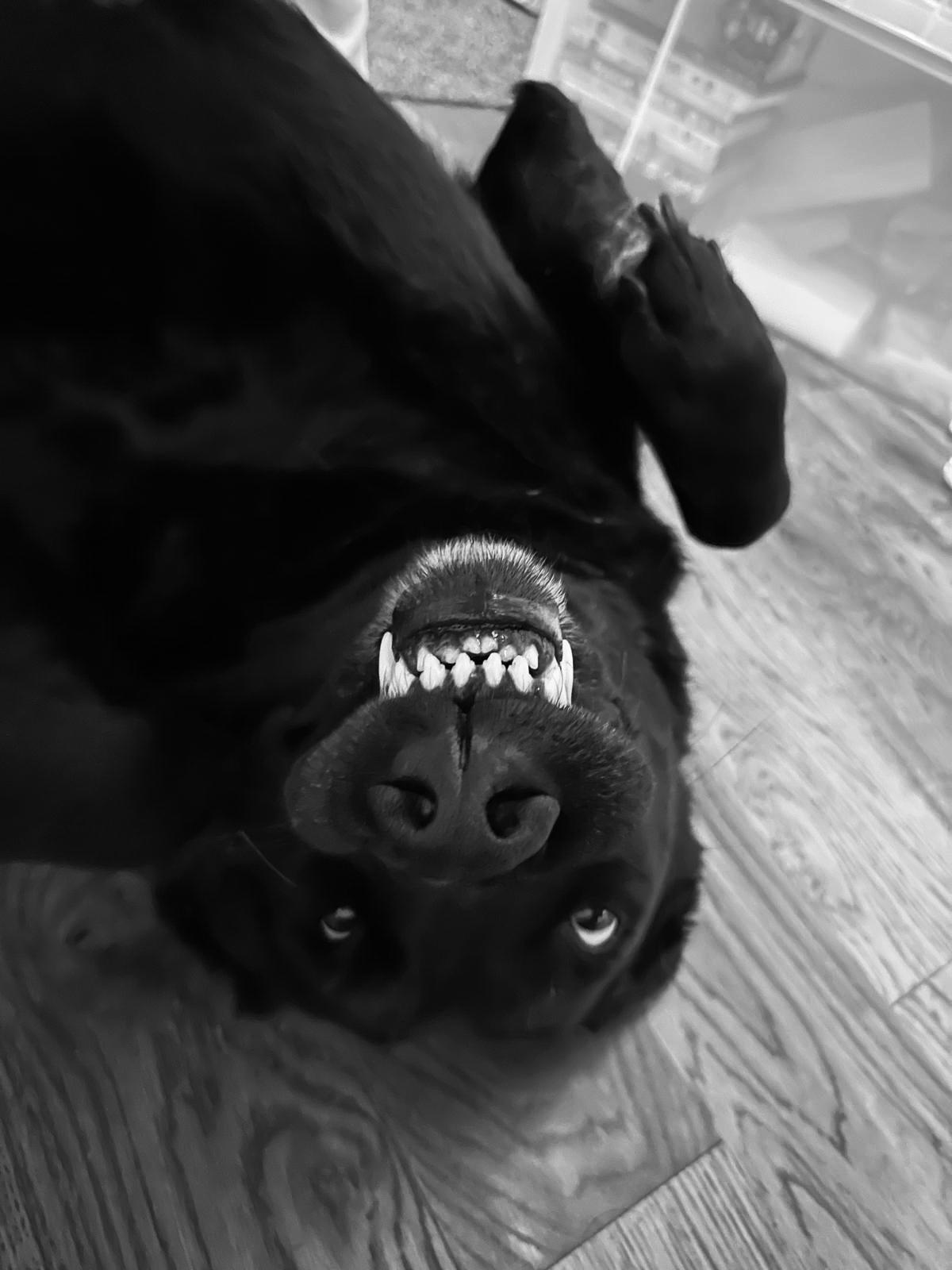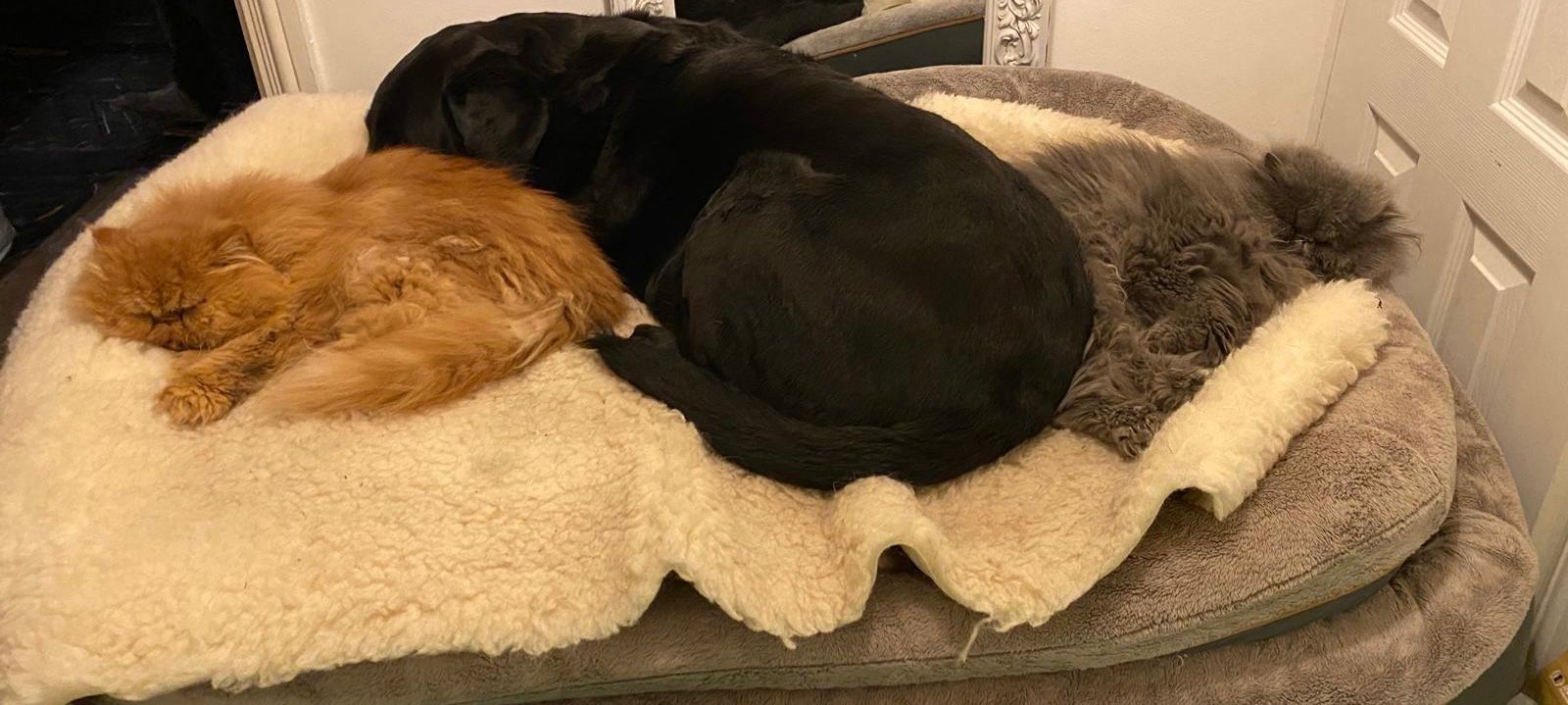In the months following the death of Mona, my gentle black Labrador, the transformation in my cat, Jane, became a profound and unmistakable testament to the depth of animal bonds. Jane and Mona had shared a unique companionship. Jane, typically aloof with others, would weave between Mona’s legs as they wandered the garden and curl up against her warm flank during afternoon naps. When Mona passed, the void she left was not just felt by the human members of the household but was deeply etched into Jane’s behaviour.
The cat who once stationed herself by the door to greet everyone ceased her vigils. She abandoned her role as the quiet observer of family gatherings, retreating instead to the silent solitude under my bed—a place she had never favoured before. Most heartbreaking was her complete avoidance of the garden, a lush territory she had once ruled with Mona by her side. It was as if the joy had been leached from her favourite spaces. This period of intense mourning was characterized by a palpable lethargy; even her appetite changed, as she showed little interest in her favourite foods. This withdrawal from routine activities and social interaction is a classic, well-documented symptom of pet bereavement, reflecting a state of confusion and profound sadness.
Animal Grief: Scientific Perspectives and Mechanisms
Modern research has moved beyond anecdote to affirm that the grief experienced by animals is a complex and meaningful emotional process. Studies confirm that pets exhibit a range of behavioural and physiological symptoms following the loss of a companion that closely parallel human experiences of bereavement (Cleary et al., 2022; Hughes & Lewis Harkin, 2022).
The theoretical underpinning for this grief often stems from attachment theory. An animal’s social bonds, much like a child’s attachment to a parent, provide a fundamental sense of psychological security and a “secure base” from which to explore the world (Axelrod, 2020, as cited in Hughes & Lewis Harkin, 2022). When that bond is severed by death, the surviving animal’s world becomes destabilized. The familiar rhythms of life—play initiated by the companion, shared feeding times, coordinated sleeping patterns—are disrupted, leading to symptoms of anxiety, confusion, and depression.
Furthermore, research has begun to explore the concept of “disenfranchised grief” in this context—a term coined by Doka (1989) describing grief that is not openly acknowledged, socially validated, or publicly supported. This applies acutely to pet owners grieving an animal and, by extension, to the surviving pets whose grief is often misunderstood or dismissed entirely (as cited in Hughes & Lewis Harkin, 2022). The scientific consensus now firmly recognizes animal bereavement as a genuine psychobiological phenomenon. The intensity of this grief is not uniform; quantitative studies suggest it correlates directly with the closeness, duration, and daily interdependence of the prior relationship, with some animals developing symptoms akin to trauma after a companion dies (Archer & Winchester, 1994; King, 2013).
The Lived Experience: Symptoms and Impact of Animal Bereavement
The symptomatology of animal grief is both varied and vivid, as documented in scientific studies and owner reports. These behaviours are communicative, expressing a internal state of distress and loss. Common responses can be categorized into several areas:
- Behavioural and Emotional Changes: This includes pronounced social withdrawal, hiding, a significant reduction in play or exploration, and apparent listlessness. Animals may also exhibit increased vocalization, whining, or meowing, and may persistently search the house for their lost companion (Cleary et al., 2022).
- Physical Changes: Grief can manifest physically through altered eating habits (loss of appetite or occasional stress-eating), changes in sleeping patterns (sleeping more or restlessness), and a general decrease in physical activity (Hughes & Lewis Harkin, 2022).
- Cognitive Signs: Some pets show signs of confusion, anxiety, and appear lost or unable to settle, reflecting the disruption of their predictable world.
In Jane’s case, her retreat from family life and her beloved garden, combined with her lethargy, were textbook examples of this grieving process. Research indicates these symptoms are not fleeting; they can persist for weeks or even months, acting as a significant disruption to the animal’s quality of life and physical health (King, 2013; Cleary et al., 2022). The recovery process often echoes classic stages of human grief models, moving gradually from withdrawal and protest toward acceptance and re-engagement with life (Kübler-Ross, 1969, as cited in Hughes & Lewis Harkin, 2022).
A Compassionate Framework: How to Support a Grieving Pet
Supporting a bereaved pet requires a patient, multifaceted approach grounded in empathy and informed by best practices. It is not about forcing a return to normalcy but about providing a supportive environment for natural healing. Science-backed guidelines suggest several key strategies:
- Maintain Predictability and Routine: In a world suddenly turned uncertain, consistency is calming. Adhering to strict schedules for feeding, walks, and bedtime provides a crucial sense of security and predictability, helping to mitigate stress and anxiety (Cleary et al., 2022; Hughes & Lewis Harkin, 2022).
- Offer Gentle Encouragement, Not Force: Encourage interaction through gentle invitation. This could involve sitting quietly nearby, speaking in a soft voice, or enticing them with a favourite toy or treat. The critical factor is to respect their autonomy and allow them to process the loss at their own pace without coercion, which could heighten anxiety (Rodrigues Alves & Scorsolini-Comin, 2025).
- Provide Environmental Enrichment: Mental stimulation can be a powerful tool for gentle distraction. Introducing new, interactive toys, puzzle feeders, or safe forms of sensory stimulation (like cat TV) can help engage their mind and encourage activity. Positive, low-pressure social contact is also a form of enrichment.
- Monitor Health and Seek Professional Help: It is vital to distinguish grief from illness. Close monitoring of eating, drinking, and elimination habits is essential. If symptoms are severe, persist for an extended period, or you suspect your pet is in physical distress, consult a veterinarian immediately to rule out underlying medical conditions. For prolonged behavioural issues, seeking guidance from an accredited animal behaviourist is recommended (Hughes & Lewis Harkin, 2022).
- Validate and Include: Acknowledge the loss. Some owners find that including their pet in family memorial rituals—such as using a calming tone to talk about the lost companion or allowing the pet to sniff a keepsake—can be a shared comfort. Validating the animal’s grief as real and adjusting your expectations during their recovery is a profound act of support that fosters resilience.
Conclusion: Toward Healing and Resilience
Jane’s gradual re-emergence—first watching the world from a window, then reclaiming her favourite indoor spots, and finally, tentatively, venturing back into the garden—was a powerful lesson in resilience. Her journey, supported by routine and gentle patience, mirrors the recovery documented in animal grief research. It affirms the profound reality of animal bereavement and underscores the critical importance of responding with scientifically-informed compassion. By recognizing their grief, providing a stable and supportive environment, and seeking help when needed, we can guide our beloved animal companions through loss, helping the entire household heal and grow together.






References
Cleary, M., West, S., Thapa, D. K., Westman, M., Vesk, K., & Kornhaber, R. (2022). Grieving the loss of a pet: A qualitative systematic review. Death Studies, 46(9), 2167–2178.
Hughes, B., & Lewis Harkin, B. (2022). The Impact of Continuing Bonds Between Pet Owners and Their Pets Following the Death of Their Pet: A Systematic Narrative Synthesis. Faculty of Health and Wellbeing, University of Bolton, PMC11776356.
King, B. J. (2013). How Animals Grieve. University of Chicago Press.
Rodrigues Alves, A. F., & Scorsolini-Comin, F. (2025). Grief for the Loss of a Pet: A Scoping Review on the Grief of Dog and Cat Owners. The Journal of Humanistic Psychology, Advance online publication.
